Excerpts from Jim Conrad's
Naturalist Newsletter
from the July 20, 2014 Newsletter issued from the Frio Canyon Nature Education Center in the valley of the Dry Frio River in northern Uvalde County, southwestern Texas, on the southern border of the Edwards Plateau; elevation ~1750m (~5750 ft); N29.62°, W99.86°; USA
PRICKLY LETTUCE
Nowadays in town along sidewalks, up against warehouses, in abandoned lots and such, one of the scraggliest, most overtly weedy-looking, but nonetheless interesting and worth noticing herb is the one shown below:
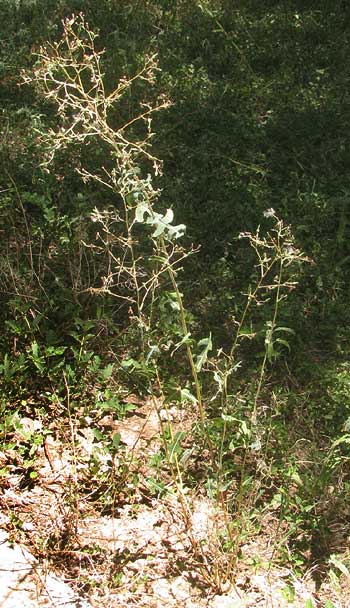
That spindly plant bears widely spaced, deeply lobed leaves somewhat like dandelion leaves, and if you tear this plant's leaf it issues white latex, or "bleeds milk," also like dandelion leaves. In fact, though dandelions produce only one white, puffball-like fruiting head, each of our weed's many thumnail-sized heads also look like a miniature dandelion head, as shown below:

In that picture notice how each white "parachute" unfurls atop a long, slender "neck" leading to a curved, brown item at the base, the cypsela-type fruit, also like that of the dandelion. If our weed were flowering we'd see that its flowers consist of heads of yellow ray flowers, also like the dandelion.
In other words, our weed is closely related to dandelions, both being members of the huge Composite or Sunflower Family, and the same "tribe," the Cichorieae, whose members produce flowering heads consisting only of ray flowers with flat, strap-like corollas, and whose herbage normally issues white juice when injured. Our plant's yellowish flowers have already passed but below you can see its urn-shaped involucres containing maturing fruits before opening up to form the above "puffball":
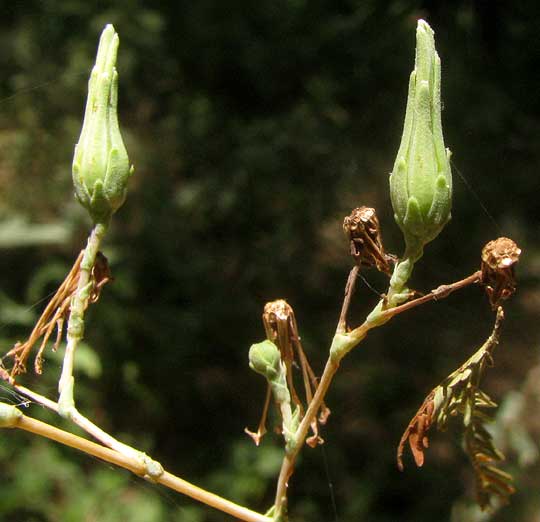
Our weed is one of several plants known as Prickly Lettuce. It's LACTUCA SERRIOLA, a native of Eurasia but now found nearly worldwide in disturbed places, and coast to coast in North America. In North America this species can best be distinguished from other wild lettuces by its occurrence in very abused soil, and its distinctive, lobed leaves, one of which is shown below:
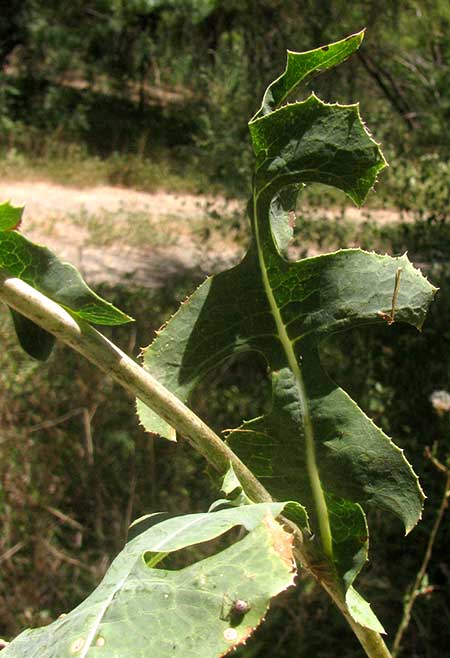
Notice how that leaf twists so curiously twisted; more about that below. Also, the leaves' bases are distinctive because they extend backwards from the leaf, making pointy little "ears" snuggled around the stem, as shown below:
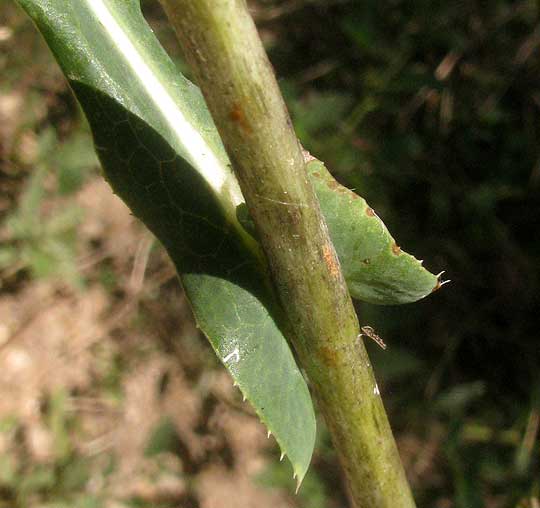
Finally, on Lactuca serriola's leaf undersurfaces the midveins are armored with sharp little prickles, pictured below:
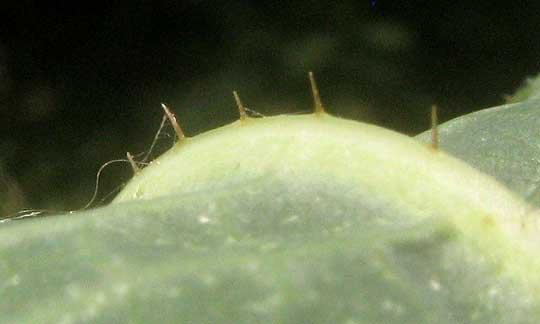
But, to return to the strange twistiness shown by the earlier leaf. Sometimes Lactuca serriola is known in English as the Compass Plant because the plant's upper leaves exhibit a very interesting "heliotrophism" enabling them to better survive under hot, sunny, dry conditions. Exactly as our picture shows, they twist so as to orient themselves parallel with the sun's rays, thereby decreasing leaf temperature and minimizing water loss.
Lactuca serriola is very closely related to the wild ancestor of our garden lettuces, so it's no surprise that its young leaves can be eaten either raw or cooked. Older leaves, however, such as those on our plant, are too bitter and coarse to fool with.
Traditionally the species has been used medicinally in various ways, its white latex containing the compound lactucarium, sometimes called "lettuce opium," which an old herbal describes as having "the effects of a feeble opium" -- mainly as a sedative. Overdoses on lactucarium, though, as with opium, can cause death through cardiac paralysis. Young plants whose leaves we might eat contain only small amounts of lactucarium, however, plus the compound is more concentrated in older plants, and in other Lactuca species.